Now for something different!
The Remington Model 1858 was a 6 shot revolver patented in 1858. My buddy Mike has an Italian made replica with an 8″ barrel in .44 caliber and he, and I, were keen to try it out on my range in the valley of the woods.
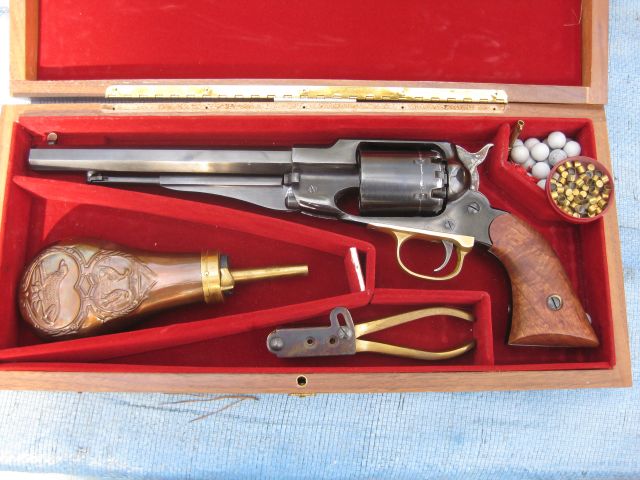
The firearm is called a revolver because it has a cylinder, which is removable, and contains 6 chambers. The procedure is you fill the 6 chambers with powder from the powder flask. The flask has a manual valve which you open, place you finger on the end of the flask tube, invert the flask and, when the flask is full, close the valve. The tube of the flask now has the required amount of powder and you invert the tube into a chamber in the cylinder.
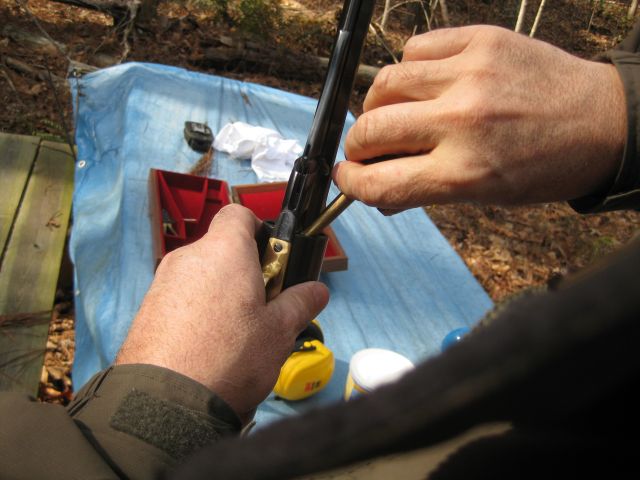
After all 6 chambers are filled with powder you then insert a bullet into each chamber. The caliber of the revolver is .44 which means the diameter of each bullet is .44 of an inch. The diameter of the bullet, which is made of lead, is slightly larger than the diameter of the chamber so the bullet has to be compressed into the chamber, which is done with the loading lever of the revolver.
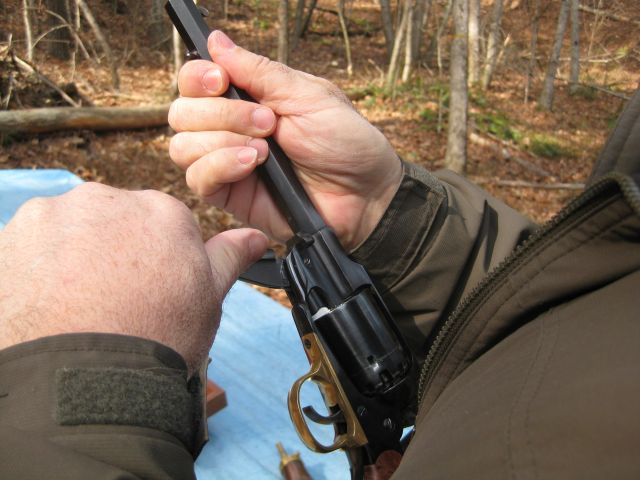
After loading the powder and the bullets into the 6 chambers we removed the cylinder for the last two steps.
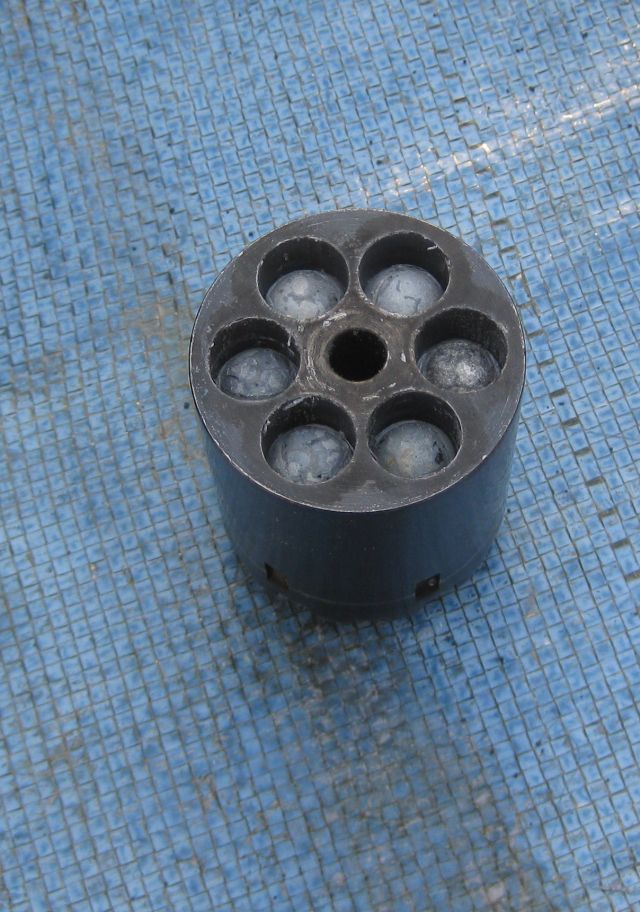
A safety concern is cross fire which could occur when you fire one chamber and the ignition triggers the other chambers. To avoid this we purchased a tin of Cresco.
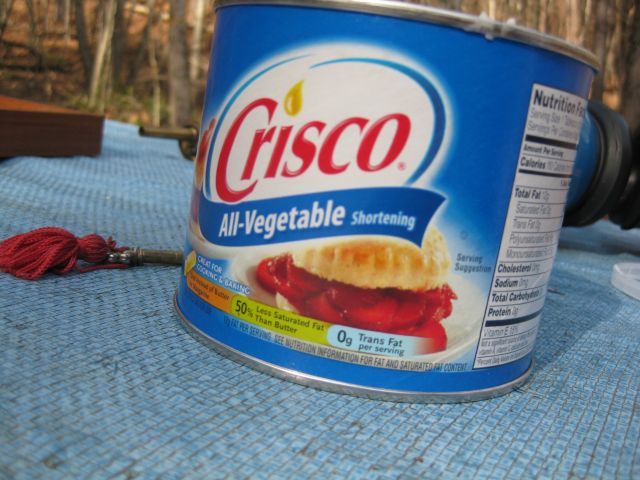
And here is the Criscoed cylinder.
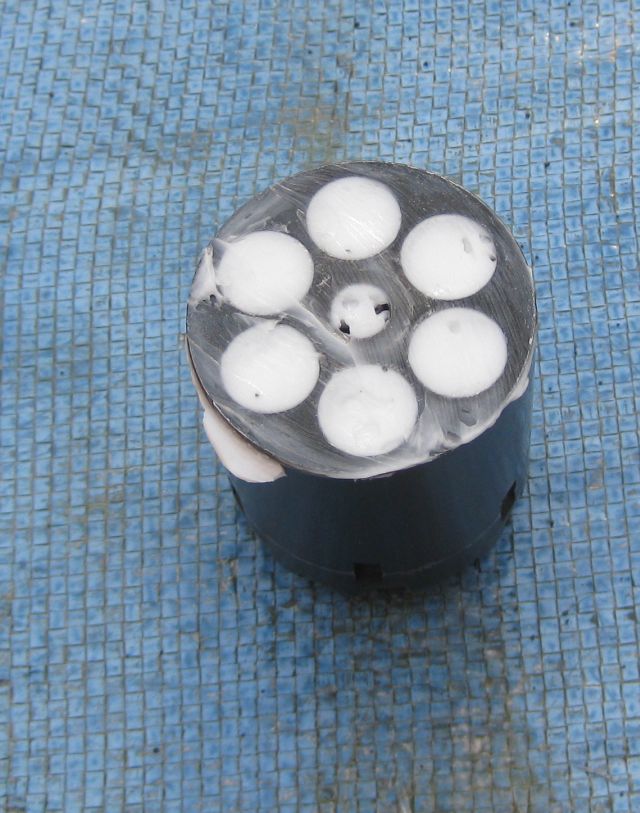
The final step was to place a percussion cap on each of the 6 nipples which are at the rear of the cylinder.
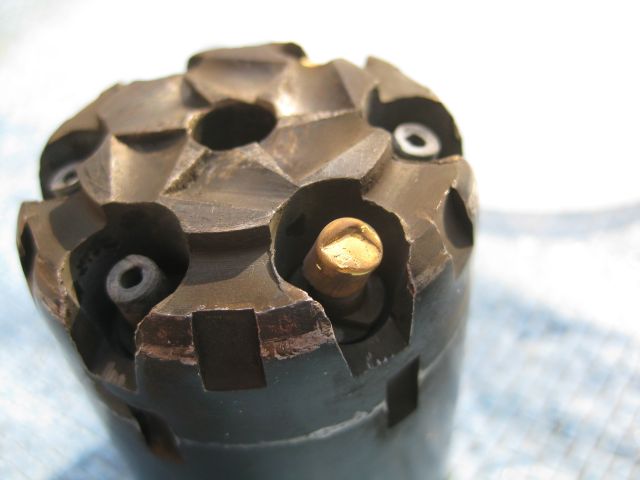
Then, with the cylinder in the frame, it was time to fire.
Oh, by the way, a confession. The gun store did not have black powder so we purchased a substitute which was also a black powder and worked just as well as the real thing.
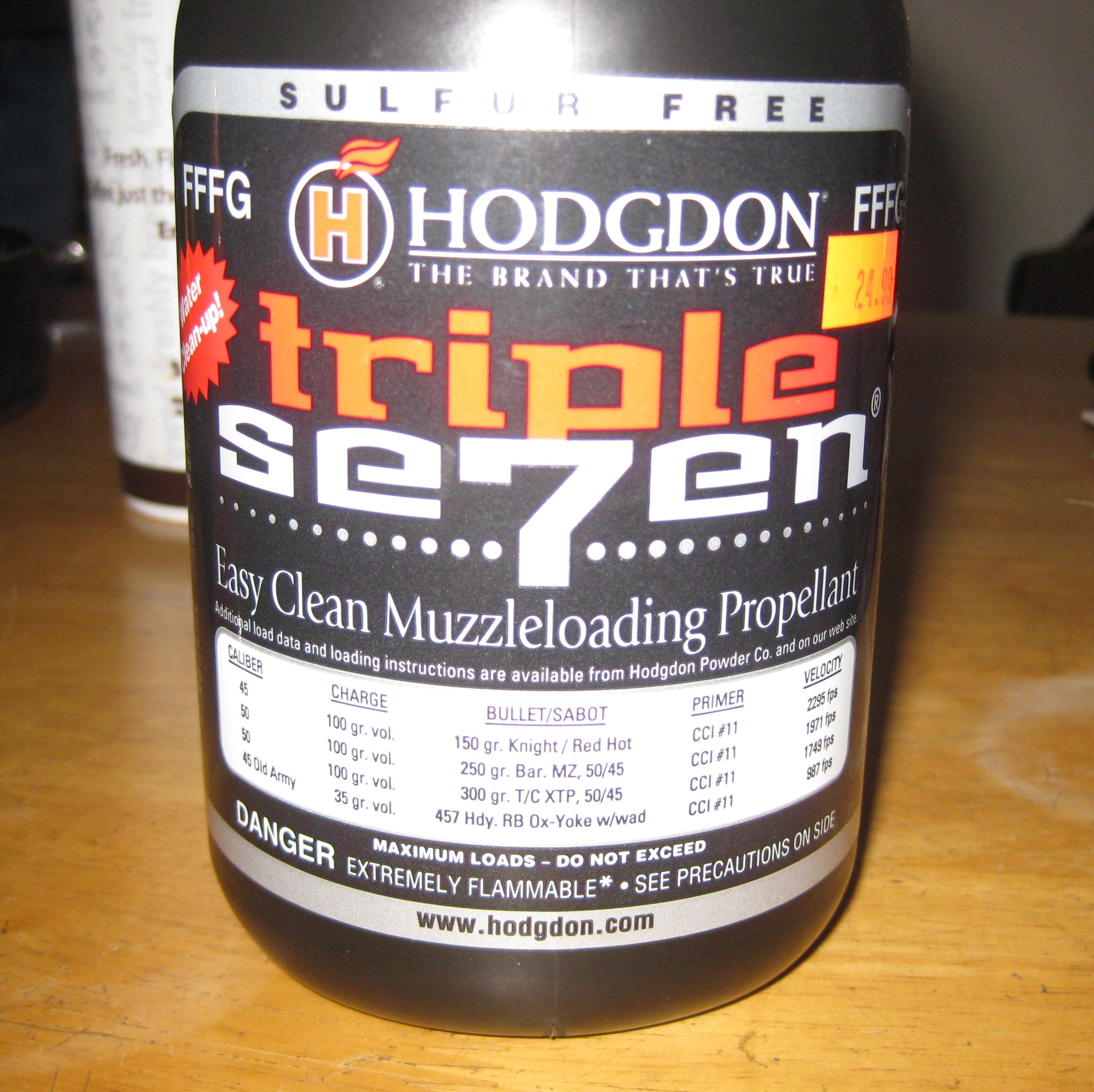
update – Mike was unhappy with the inaccuracy of the revolver. I thought the 2ft grouping at 50ft was ok for first time firing of this weapon. He says with its 8″ barrel and grooving this is a very accurate weapon and should have produced a tighter 6″ cluster. He studied the photos on this site and identified several reasons. First, the bullets should be close to the cylinder face – the reason they are so deeply seated is because we didn’t use wads, which we will use next time. His reasoning is that it is important the bullet be close to the grooving in the barrel so it starts rotating immediately. Seated deep in the cylinder means it will travel a short distance without rotation and this will adversely affect its subsequent rotation. He also noted that some bullets were more depressed in the cylinder than others which means the powder charge was inconsistent and this will affect accuracy. Finally, not all the trigger pulls fired first time and the reason we surmised was because the caps were not properly seated on the nipples and with the first trigger pull the hammer seated the cap on the nipple and then it fired on the second hammer pull. Mike notes from the picture that some of the nipples are deformed from dry firing and he will investigate acquiring a nipple remover tool and new nipples to correct this problem. Finally, Mike says black powder is more accurate than the powder we used. It is like diagnosing intermittent firing on an older vehicle – so many things to consider and skills to acquire, now redundant from modern technology.
